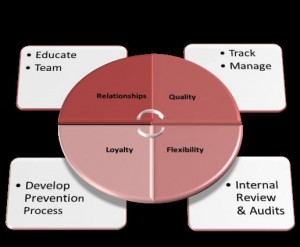Have you asked this question? Well, who is looking out for you? As a national provider of therapy services in Skilled Nursing Facilities and in CCRCs, we know who is watching!
CERTS, MACS, RACS, and ZPICS are penetrating more and more in the industry. If you are a Medicare provider, you will want to partner with a rehab provider who will look out for you.
Let’s briefly take a look at these audits.
- Comprehensive Error Rate Testing (CERT):
- Developed by CMS to randomly audit claims monthly and determine if they processed claims correctly
- They establish error rates and estimates of improper payments
- Contractors then use this information to determine the cause of errors and work to resolve them
- These types of audits are random post-payment review of all claim types and services
- Medicare Administrative Contractors (MAC):
- Process and pay claims for both Part A and Part B services
- Will conduct pre/post payment reviews to look for discrepancies
- Responsibility is to make sure the provider doesn’t have a high payment error rate
- Post payment reviews can go back up to four years after payment and they can review any claims they choose
- Recovery Audit Contractors (RAC):
- Detects and correct past improper payments so that CMS and Carriers, FIs, and MACs
- Can implement actions that will prevent future improper payments
- Goal of the recovery audit program is to identify improper payments made on claims for services provided to Medicare beneficiaries
- Improper payments may be overpayments or underpayments and the look back period can be up to three years from the date the claim was paid
- Zone Program Integrity Contractors (ZPIC):
- Responsible for preventing, detecting, and deterring Medicare fraud
- Work proactively through data analysis scrutinizing billing practices, patterns, or trends that may indicate fraudulent billing through pre and post payment reviews
- Receive referrals from MACs, providers, beneficiaries, law enforcement, etc.
- Will refer potential fraud cases to the Office of Inspector General (OIG) where criminal or civil prosecution, monetary penalties, and/or administrative sanctions may occur
Overwhelming? Darn right it is! Responding to audits are time consuming and costly and if we don’t manage them properly, they can potentially be a financial threat.
So how do we prepare?

- Educate, educate, educate. Ongoing knowledge of what is going on in the industry is crucial. Provide key stakeholders with specific audit information so they can better understand the potential revenue impact
- Be prepared! Develop an interdisciplinary “audit team” and meet regularly to understand the audit process. Develop an internal audit process at the facility level to ensure you abide by the timelines/deadlines as well as the accuracy of information provided to the auditor
- Tracking. Tracking is extremely important. The best practice is utilizing tested software that tracks and trends information to help identify negative patterns that can be corrected prior to payment submission to prevent future recoupment
- Manage.There are a lot of items that you should manage:
- Manage request letters in a manner that will allow you to obtain information quickly, manage deadlines, and avoid denials and recoupment
- Manage decision letters is extremely important. Review and process these quickly Keep decision the letter with the corresponding clinical documentation submitted to achieve quick retrieval of documents for future appeals
- Manage the appeals process precisely to ensure deadlines are not missed
- Financial Management. You will need to establish financial management and review process to track potential financial loss
- Develop a denial prevention process. This is most effective by conducting your own internal peer review and auditing process. Track and review the results often and provide ongoing education. Improve quality of documentation.

Comments (0)